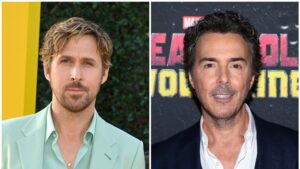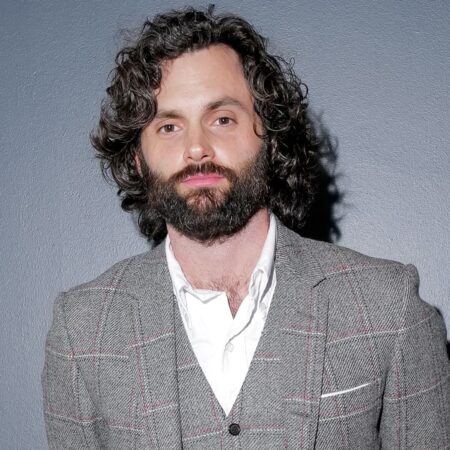British actor Aimee Lou Wood is having what she described as a “full-circle” moment. The unwitting star of it?
“I can’t believe the impact my teeth are having because the Americans can’t believe [it],” Wood explained on the Jonathan Ross show.
Taken out of context, it’s hard to make sense of what the HBO star is talking about. But, as someone born with a class 2 malocclusion and skeletal imbalance — fancy medical terms for a severe overbite and deformed jaw — I didn’t need to know what Wood’s teeth looked like in order to know exactly what she was referring to.
The immense popularity of “The White Lotus” in the United States has meant that Wood’s decision to do absolutely nothing about her overbite would not go unnoticed. The reaction to her teeth was so outsized that the actor even cautioned audiences against a DIY approach to emulating her smile. Social media orthodontists and dentists have, predictably, clambered to diagnose the position of Wood’s teeth.
Leave it to Americans to hyperfixate on a person’s dental structure.
Wood, with her rather common set of misaligned front teeth, made their debut on “The White Lotus” earlier this year, during the first episode of Season 3. Set at a wellness resort in Thailand, the show follows Wood’s character Chelsea, who meets Chloe (Charlotte Le Bon), another resort guest. In what might turn out to be one of the most striking and memorable scenes of the season, Chloe said to Chelsea, “I love your teeth. You’re from England, right?” Fans of the show would later learn that the line was improvised and, much to Wood’s delight, included in the final cut.
I’m certainly not surprised by the reaction to Wood’s teeth. American culture is historically known for our obsession with perfect teeth. Millions of children become new orthodontic patients each year, according to the Orthodontics Association; an estimated 50% to 70% of U.S. children will wear braces before adulthood. Adult orthodontics is also on the rise in both the U.S. and the United Kingdom, where Wood is from.
In Hollywood, World War II-era dentist Charles Pincus manufactured the smiles of the movie stars of the moment, including Judy Garland, James Dean and Shirley Temple.
I know firsthand that anyone who lived life with so-called “bunny teeth” is equally pleased and perplexed by the positive attention Wood is receiving. By the time I turned 8 years old, I was diagnosed with “bad teeth” — both officially by doctors and unofficially by other children and cruel adults. Like Wood, I paid a steep social price for how my teeth seemed to take on a life of their own. The hyperfixation on my mouth led to a version of body dysmorphia that I now know is a life sentence. I’ve experienced three rounds of orthodontia, one round of double-jaw (also known as orthognathic) surgery, and life-altering bullying and harassment. As I consider a fourth round of treatment, I am simply not able to imagine that my teeth are “good enough.”
My first round of braces came off just as I was turning 14 years old after what felt like an endless period of sustained and intense abuse by my elementary and middle school peers. But within five years, my teeth relapsed to their original position, and it was as though I had morphed right back to being that vulnerable junior high school kid all over again.
My new abusers (mostly men, by this point) came out in full force, fully prepared to comment on how pretty and dateable I’d be, if only my teeth, well, weren’t my teeth. These interactions typically occurred during my shifts as a server at local restaurants, but also when I went to buy groceries or get gas.
Not one of these offending men, I should point out, seemed to be on track to make lucrative careers out of their own physical attributes, but such appeals to logic do not typically register in our culture.
Occasionally, I was even subject to commentary from family members who couldn’t believe that my orthodontia hadn’t worked, despite more than three grueling years of attempting to manipulate my teeth into submission with brackets, headgear and dental wax that I can still taste if I think about it hard enough.
My mother, not yet known for being litigious, spoke often about how she wanted to sue my childhood orthodontist years after it became clear that the treatment had failed. The doctor happened to be my father’s orthodontist when he’d had braces as a kid. He was fast approaching retirement when I began seeing him as a new patient for my runaway teeth at around 10 years old.
“The doctor’s probably dead,” I remember saying. How embarrassing. It wasn’t his fault that I neglected to wear — and eventually lost — my retainer. I was in college by then, no longer a kid. What did she expect him to do?
“Then we’ll sue his estate,” she countered. It turned out to be an empty threat.
The prognosis was clear: My teeth had initiated another race against my face, only this time I was an adult. My severe overbite was no longer my parents’ problem.
Around this same time, I began my career as an educator. My first job was at a Catholic high school in New Jersey, where I served as an in-class support instructor for students with learning disabilities. It was here that I was subjected to the sound of a horse’s neigh when in the presence of two specific boys who were far more focused on dehumanizing me than they were on advancing their (expensive) education. I remember wondering if their parents knew what kind of young men, now on the verge of adulthood, they had raised.
My own teeth have been the unwitting star of the story of my life, both before and after treatment. And thanks to Wood’s willingness to share her experiences with bullying, abuse and professional insecurities over something entirely out of her control, I’ve realized that I’ve had my own full-circle moments.
I am now a writer for children. When I wrote my debut novel, “Jawbreaker” — a story about a middle schooler named Max Plink with a complicated orthodontic case, and who faces severe bullying and ostracization because of it — I never imagined I’d hear from hundreds of children who related so much to a character who struggled, whether because of their less than socially acceptable teeth or something else, to fit in with her peers. I also hear from adults who say that they wish “Jawbreaker” was around when they were a kid, if only to have felt a little more normal in their own skin.
Some of the people who witnessed my toughest experiences as an adolescent are teachers now. Their students read my books, and “Jawbreaker” is even sold at the same schools in Brooklyn, New York, where so much of Max’s (and my) story takes place. It is my own “full-circle moment” if ever I’ve experienced one. Some students have even chosen “Jawbreaker” as their book project in their English Language Arts classes.
Enjoy HuffPost Entertainment — Ad Free
Support HuffPost
Already contributed? Log in to hide these messages.
I don’t pretend that my story is identical to that of Wood’s. She’s a famous actor; I’m a relatively obscure author and teacher. She seems wildly comfortable in her own skin, while I’d pursue a fourth round of braces tomorrow if I knew my teeth could handle more manipulation. Her fans need to be warned off drastic measures to emulate her smile, while no one (that I know of) is clambering for a set of DIY teeth that match mine. For the record, I’ve never been told by an orthodontist or dentist that my teeth are “perfectly imperfect” as they are.
But in certain ways, all of our stories collide, no matter who we happen to be. And I hope in the telling of these stories that more people realize — and relish in — their own full-circle moments.
Read the full article here








